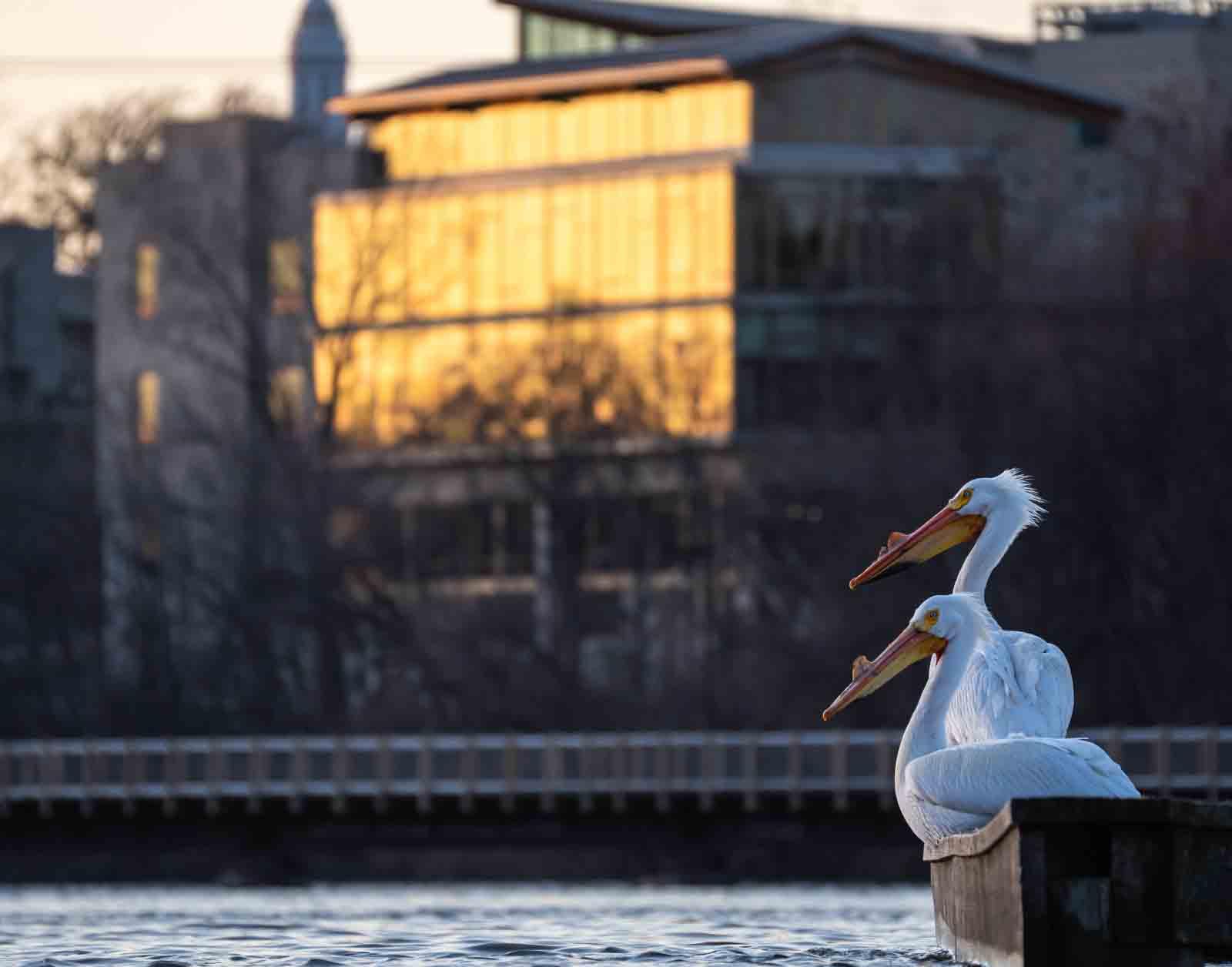I’ve been fascinated by the natural world since I was very young. I spent many of my early years exploring the forest and streams in the Oregon coast range with friends and family. When I was 12, my best friend started birding, and while we were out in the woods exploring, he would point out species to me. I quickly became hooked on watching birds, and this has developed into a hobby (well, maybe more of an obsession). As I started to watch more and more birds, I decided to get a camera so I could capture some of the spectacular animals I would see while out in the field. Over the last seven years, I have continued to photograph birds and now have a curated library with about 10,000 photographs from more than 500 species of birds.
Wildlife enthusiasts often think about going to a national wildlife refuge, a state park, or maybe a national forest. But we have animals that live around us all year; in fact, quite a few species can be seen without even leaving the Lawrence University campus. More than 140 species of birds have been found on campus, 92 of which I have seen since the start of this academic year, and even more can be seen on a short walk off campus on one of the trails along the Fox River. I’ve also seen numerous mammals such as a red fox, American mink, and white-tailed deer, plus four species of rodents. These neighbors can easily be missed if you do not pay close attention to your surroundings. With busy schedules, it’s easy to forget that many other creatures call our campus home.
The best way to spot our animal friends is to watch closely for movement or listen—about 75% of the animals I find are heard first—but remember to watch them from a respectful distance and never approach or feed wildlife on campus.
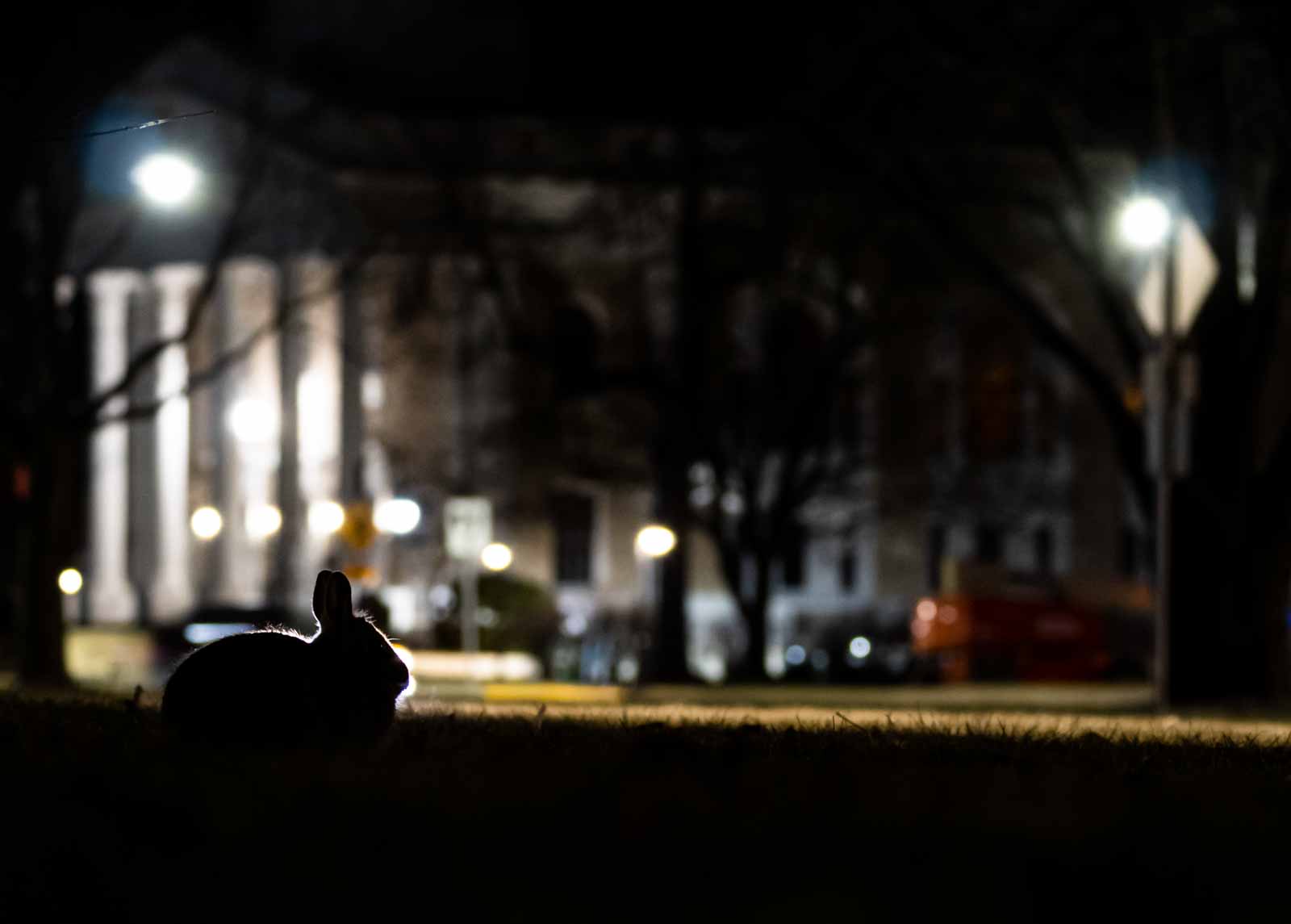
Eastern cottontail, Sylvilagus floridanus. About: Eastern cottontails have a large range stretching from the southern parts of Canada to Venezuela and Columbia in South America. They feed primarily at dawn and dusk and sometimes during the night. They are quite common on campus and can be found in grassy areas with shrubs nearby. Behind the shot: I am always watching the animals very closely on campus and noticed the particular rabbit could regularly be found after dark outside my dorm. To get it silhouetted against the lights of campus I spent about half an hour lying on my belly waiting for the perfect moment. Getting enough light in night images is always hard, and for this shot I was particularly lucky because I managed to get a car lined up perfectly behind the rabbit, giving some extra light for its silhouette.
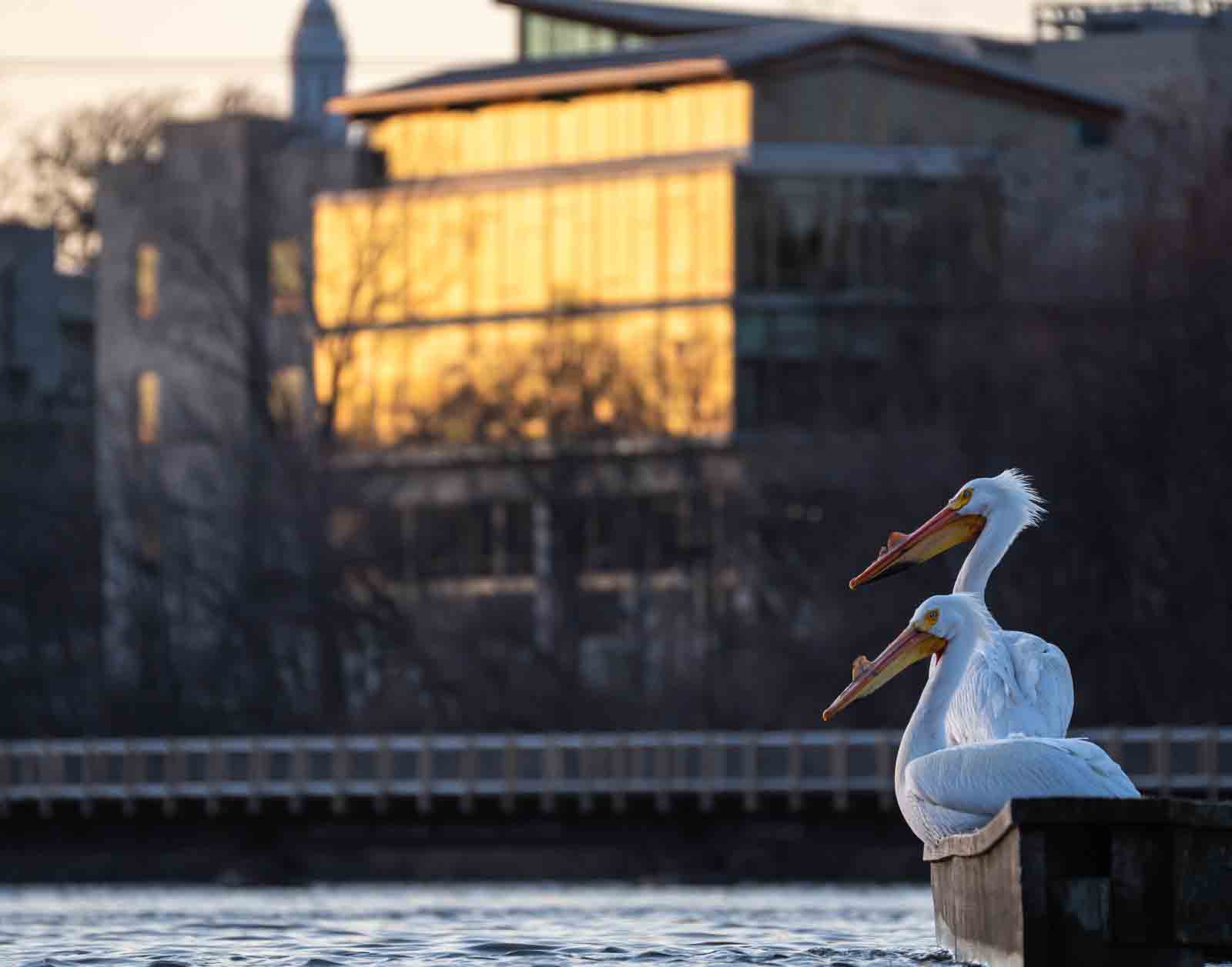
American White Pelican, Pelecanus erythrorhynchos. About: With a wingspan of 108 inches and weighing over 16 pounds, American white pelicans are among the largest birds in North America. These majestic birds can be found regularly along the Fox River and Lake Winnebago, where they hunt in groups for fish. Their large beaks help them scoop up fish, but contrary to cartoon portrayals, they do not use them to carry food in their bill pouches. Behind the shot: I recently noticed a small flock of pelicans swimming near campus. It was hard to get a good angle on these birds because of the steep banks along the Fox River. For this shot, I lowered myself down to a few dry rocks, and with my back against a rock wall I was able to get this photo of two of the pelicans from water level as the sun shown off the Warch Campus Center windows.
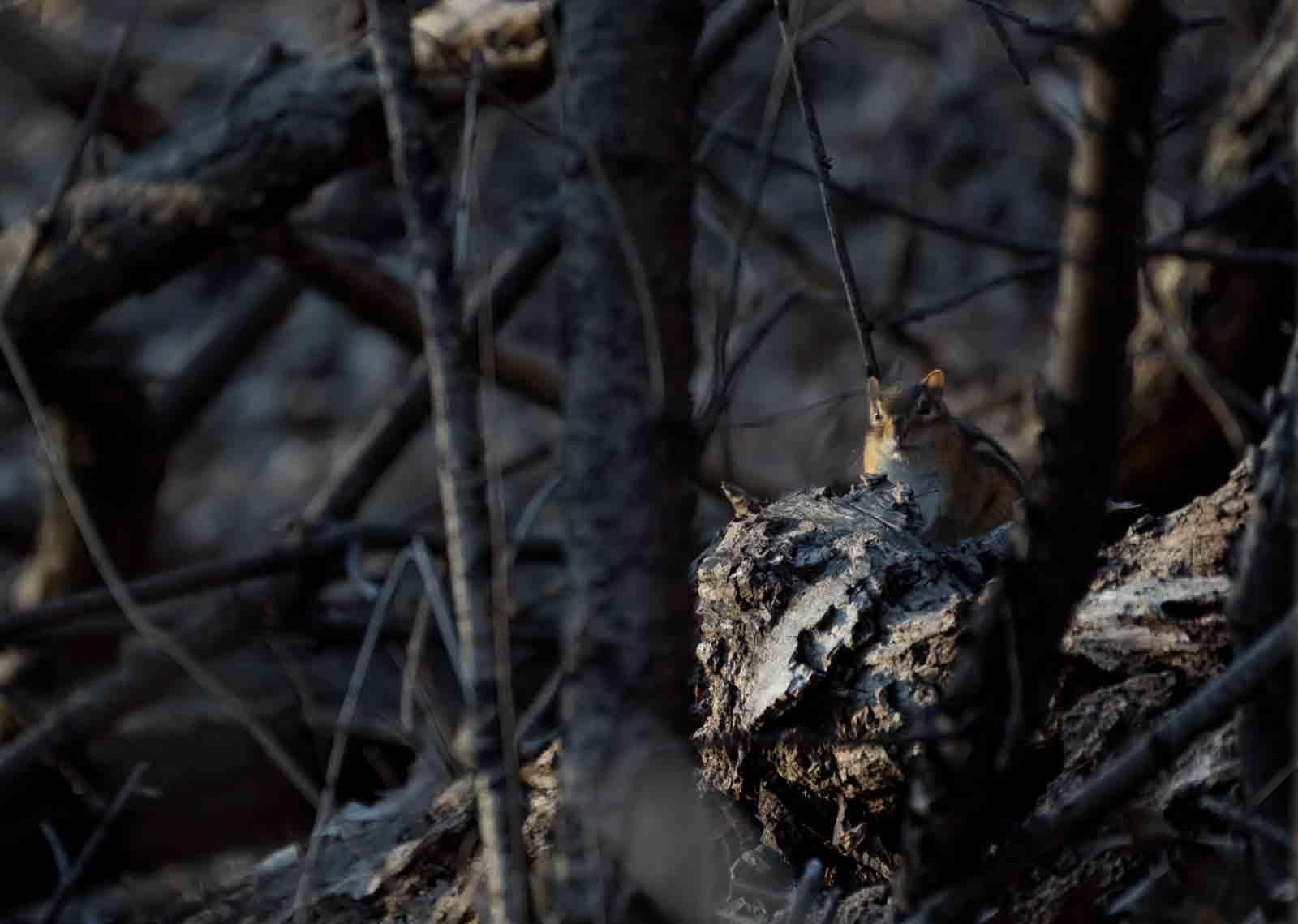
Eastern chipmunk, Tamias striatus. About: There are a few places on the Lawrence campus where Eastern chipmunks can be seen; however, due to their size and skittishness, they can be much easier to hear. They live in burrows and hibernate during the cold winter months. Behind the shot: Because of their size, getting this shot was quite difficult. I had to climb up the slopes along the Fox River by the trail that runs below the Warch Campus Center and wait patiently for this chipmunk to stick its head out of the burrow, which it obligingly did after a while.
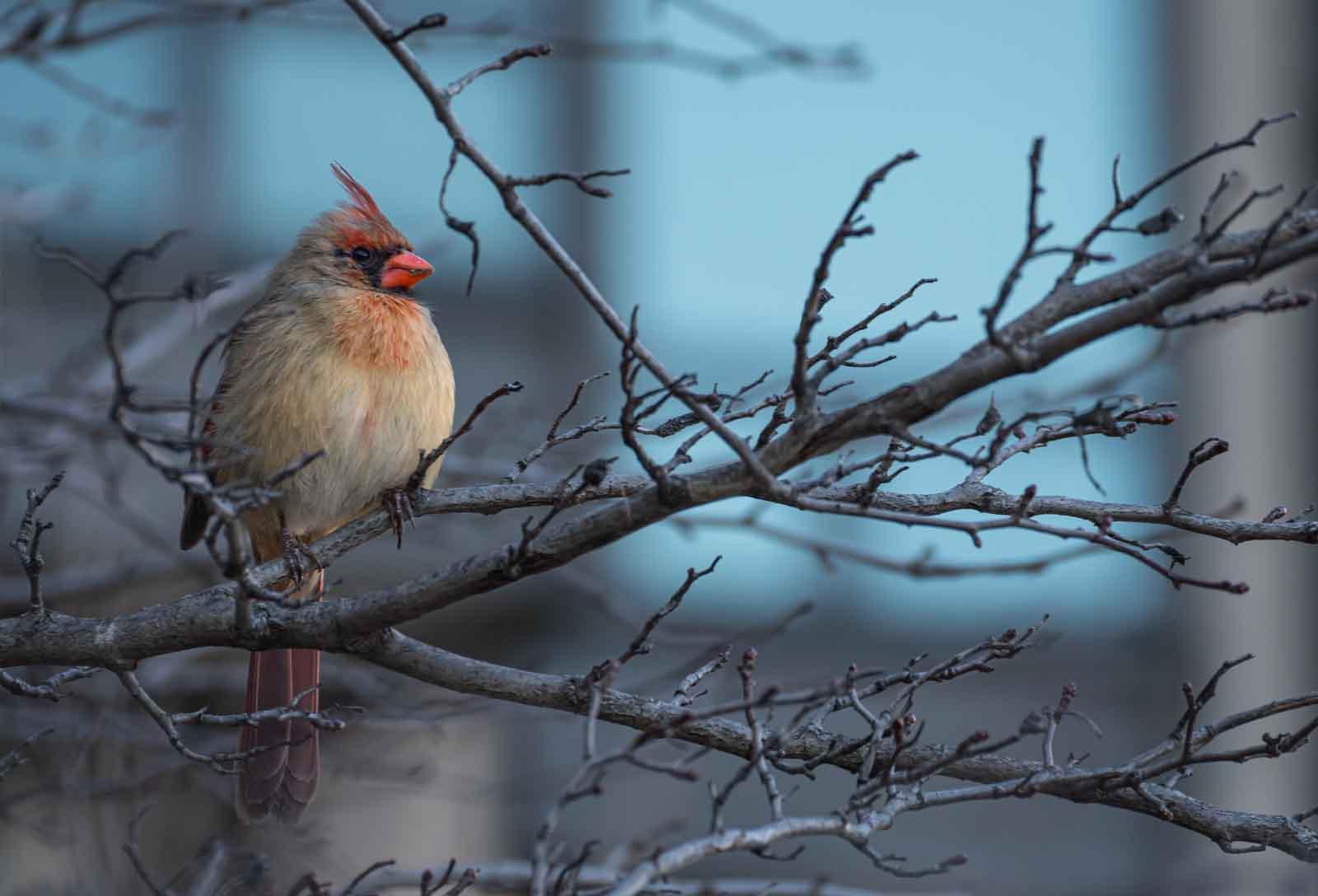
Northern cardinal, Cardinalis cardinalis. About: Northern cardinals are among the most iconic backyard birds in eastern North America. They frequent feeders regularly and are quite unmistakable, with the males being a brilliant red and the females taking on a more subtle tan with a few red feathers and a red beak. The cardinal is the state bird for seven U.S. states. Behind the shot: Photographing cardinals is surprisingly challenging as they feed primarily in the low underbrush. For this female, I was lucky to get the right angle so no branches would be in the way as she perched in a tree outside of Hiett Hall for a minute before flying back into the underbrush to feed.
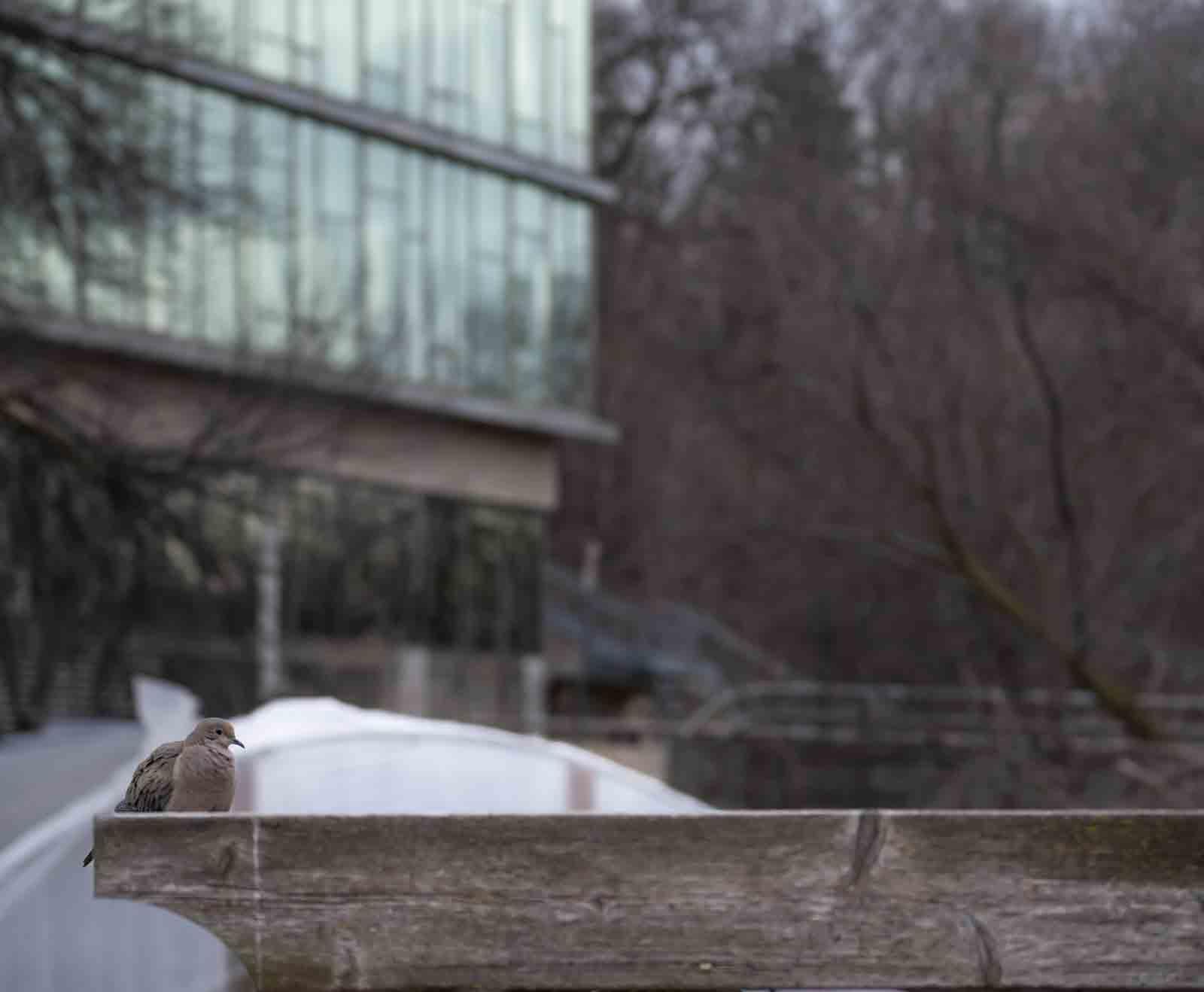
Mourning dove, Zenaida macroura. About: Mourning doves are the most widespread species of dove in North America and can be found regularly in every state except Alaska. They are known for their beautiful song, which you can hear year-round. They can often be seen perched on fences, power lines, and buildings, and when they take flight, their wings make a cool whistling noise. Behind the shot: I wanted to capture this bird’s surroundings—the SLUG community garden. I ended up climbing onto a small stone wall for about 15 minutes so I could get eye level with it.
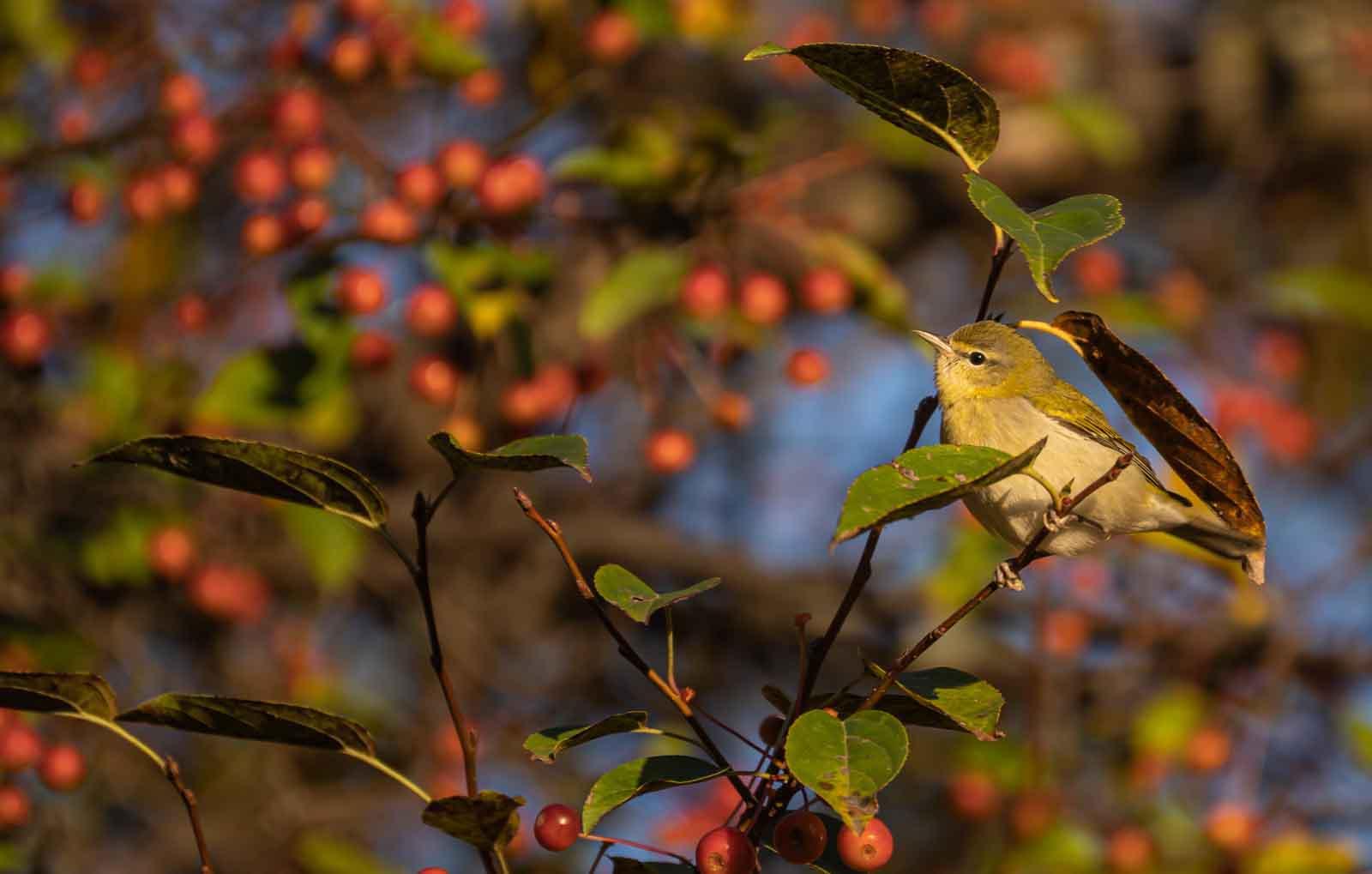
Tennessee warbler, Leiothlypis peregrina. About: Tennessee warblers are one of the many species of birds that migrate from their wintering grounds in Central and South America up to the boreal forests of Canada to breed in summer. Their more than 2,000-mile journey takes place in a matter of weeks, so many migrants double their body weight to help them make the journey. Behind the shot: Last fall I was very happy to find this warbler feeding in a bush by Main Hall with the low early morning light shining upon it and the red berries giving a nice contrast.
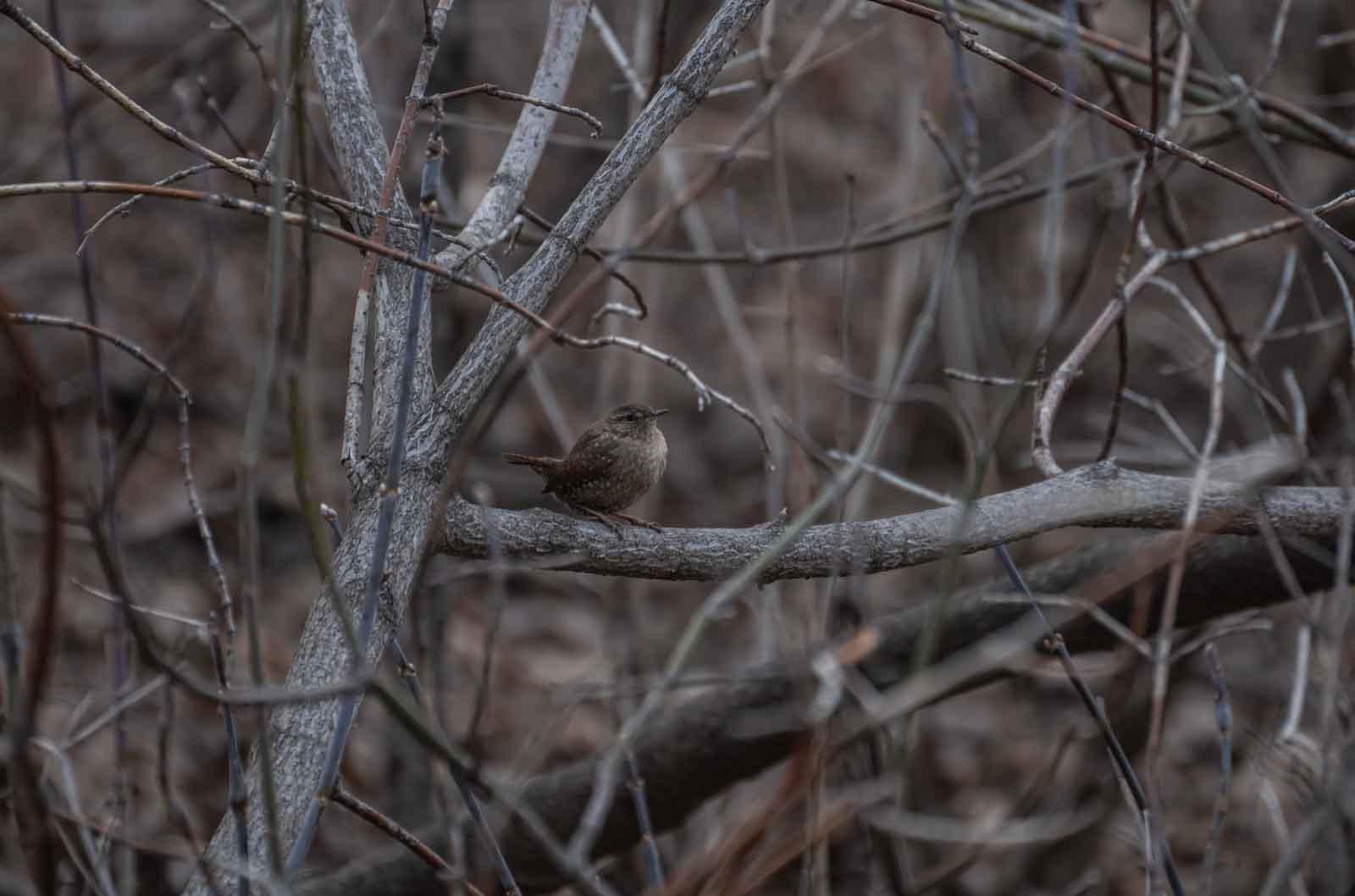
Winter wren, Troglodytes hiemalis. About: At about 10 grams, the winter wren is one of the smallest species of birds that can be found on campus. It is easier to hear than to see as its beautiful song pierces through the air while it blends perfectly with the underbrush. Behind the shot: Out of the 520 species of birds I have photographed, the winter wren had evaded me until I located this bird a few weeks ago. I heard its song near the Warch Campus Center and spent a while tracking it down before it popped up for 30 seconds. I managed to snap this shot before it disappeared in the underbrush by the riverbank.
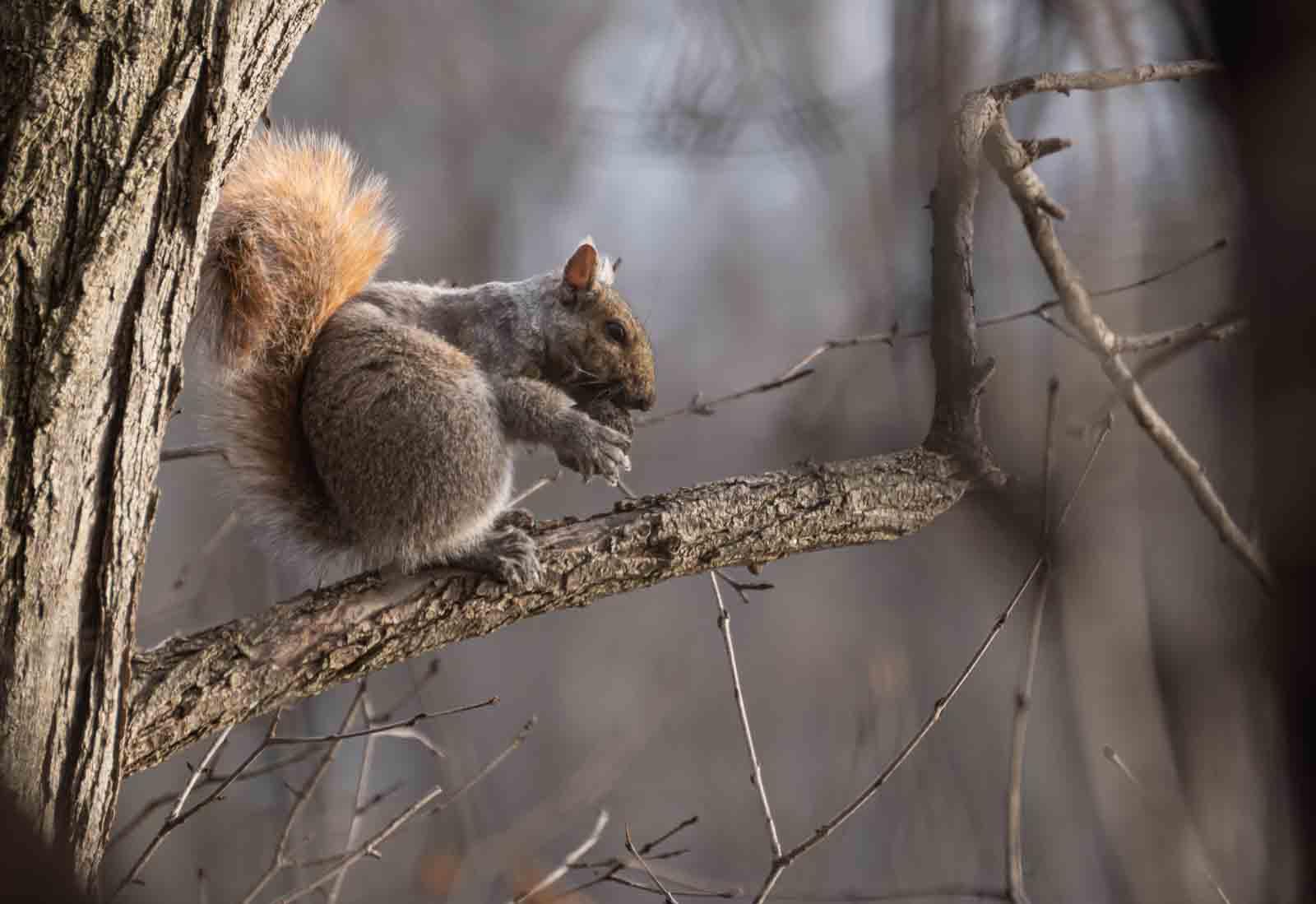
Eastern gray squirrel, Sciurus carolinensis. About: Eastern gray squirrels are the easiest mammals to see on campus as they feed during the day and love to feed in open areas such as Main Hall Green. They are quite social and you can see them chase each other from tree to tree. Every once in a while you can find a black Eastern gray squirrel, which is a result of an abnormal pigment in a gene. Behind the shot: I spent a few hours in the woods near the trail below the Warch Campus Center until I managed to find this one perched at eye level clutching a nut.
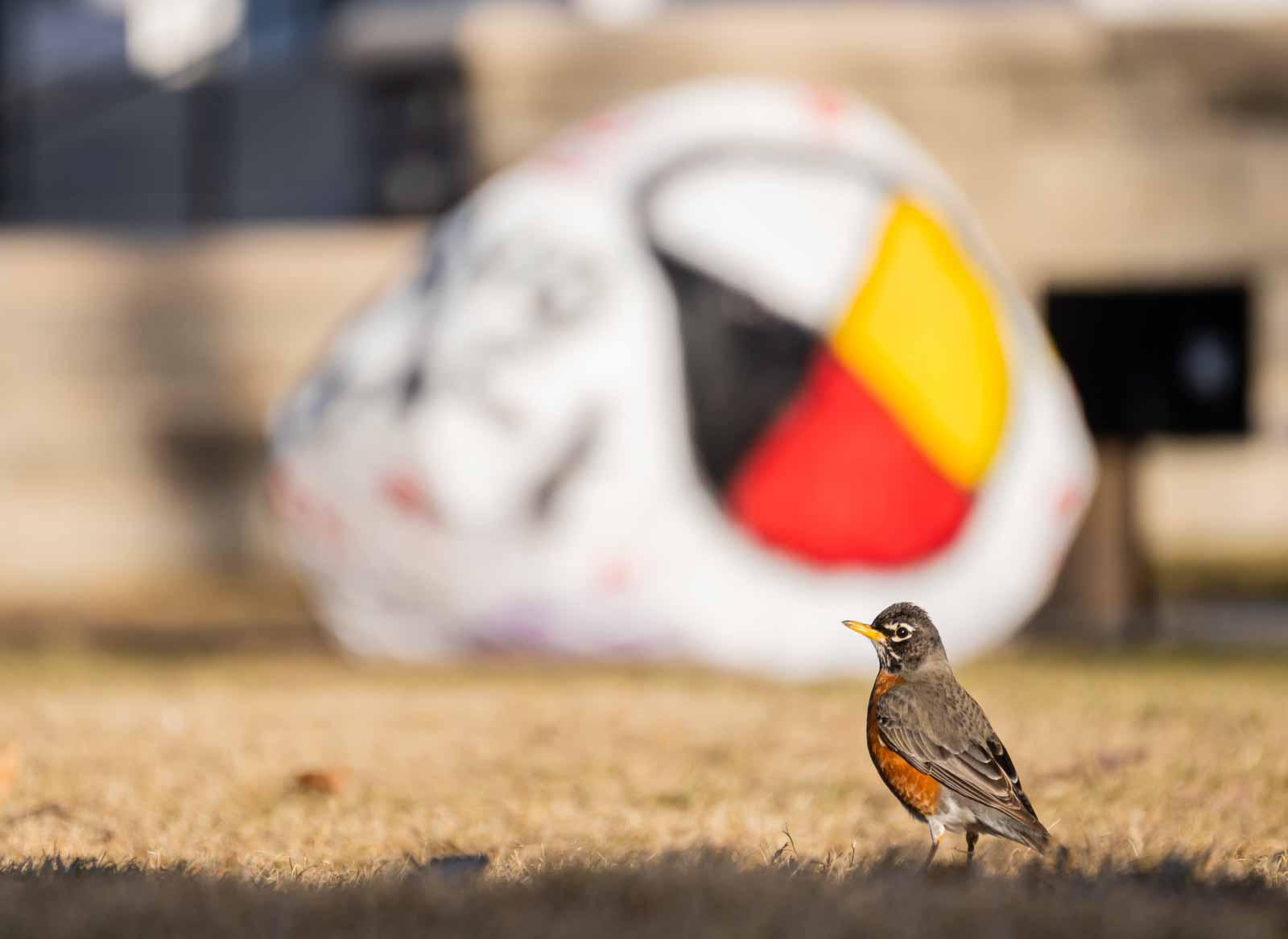
American robin, Turdus migratorius. About: American robins are among the most widespread species of birds in North America and will congregate in flocks of over a quarter-million birds. They greet spring mornings with their beautiful song and often start singing while it is still dark. They are particularly common on Main Hall Green and are often found foraging for bugs on grassy patches or in berry bushes. Behind the shot: I wanted to showcase a robin on Main Hall Green in front of one of the iconic campus spots. I spent over an hour on my belly trying to get this eye-level view of this robin. When it hopped in front of the Rock, I seized my opportunity and captured it as it looked up from feeding.
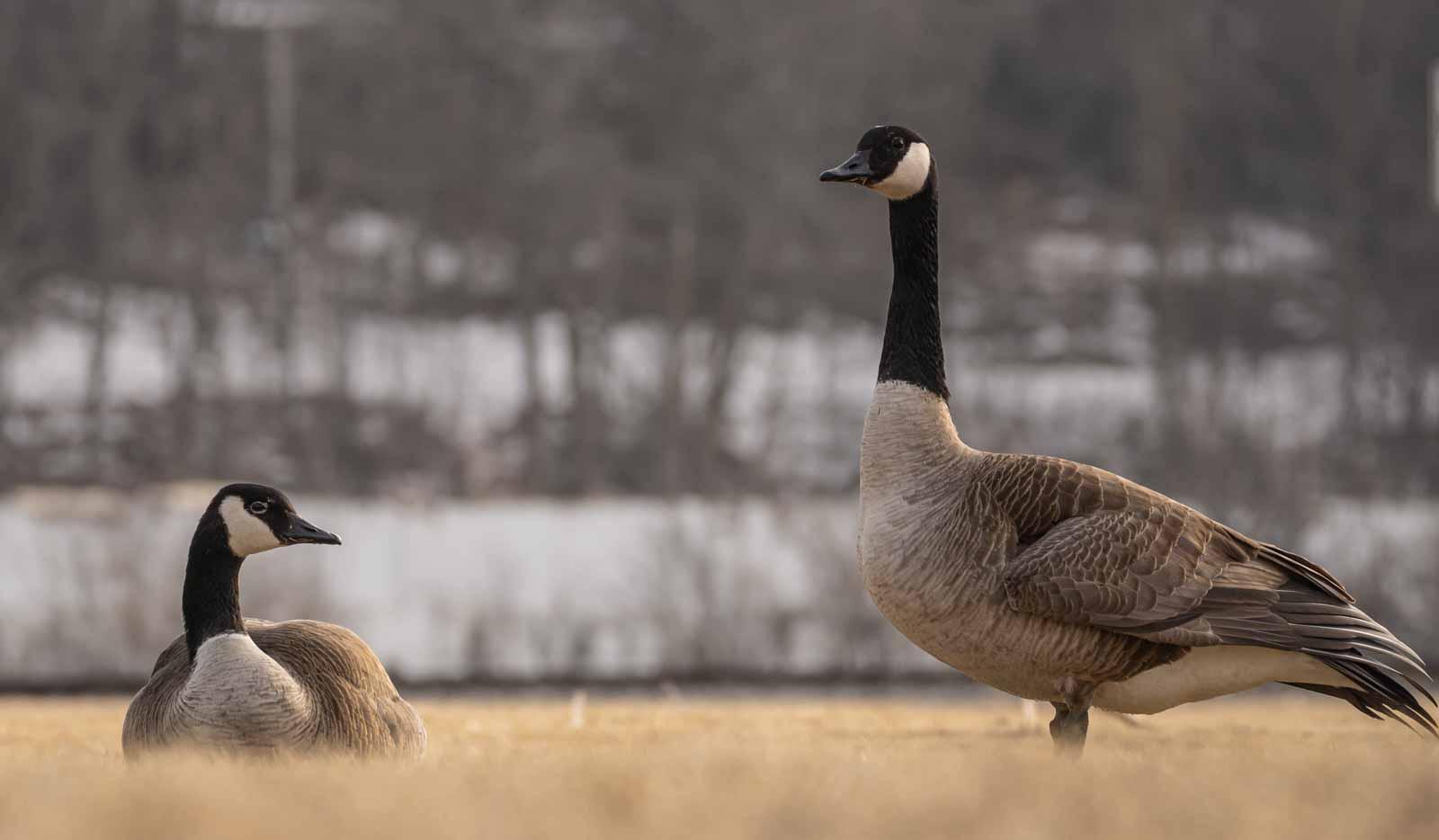
Canada goose, Branta canadensis. About: The Canada goose is the most widespread species of goose in North America. The largest and one of the most widespread subspecies, the “giant” Canada goose, almost went extinct in the early 1900s, but due to successful conservation efforts, its comeback has been so successful that these geese are a nuisance in many urban areas. Along the Fox River, many can be seen pairing up as early as February. They make their presence known with loud and frequent honking. Behind the shot: Even though Canada geese are common, photographing common birds can be rewarding. For this shot, I wanted to see if I could get a different perspective on this pair. I went across the river from campus and watched them for about 30 minutes. I ended up lowering my camera to just a few inches above ground to get this view.
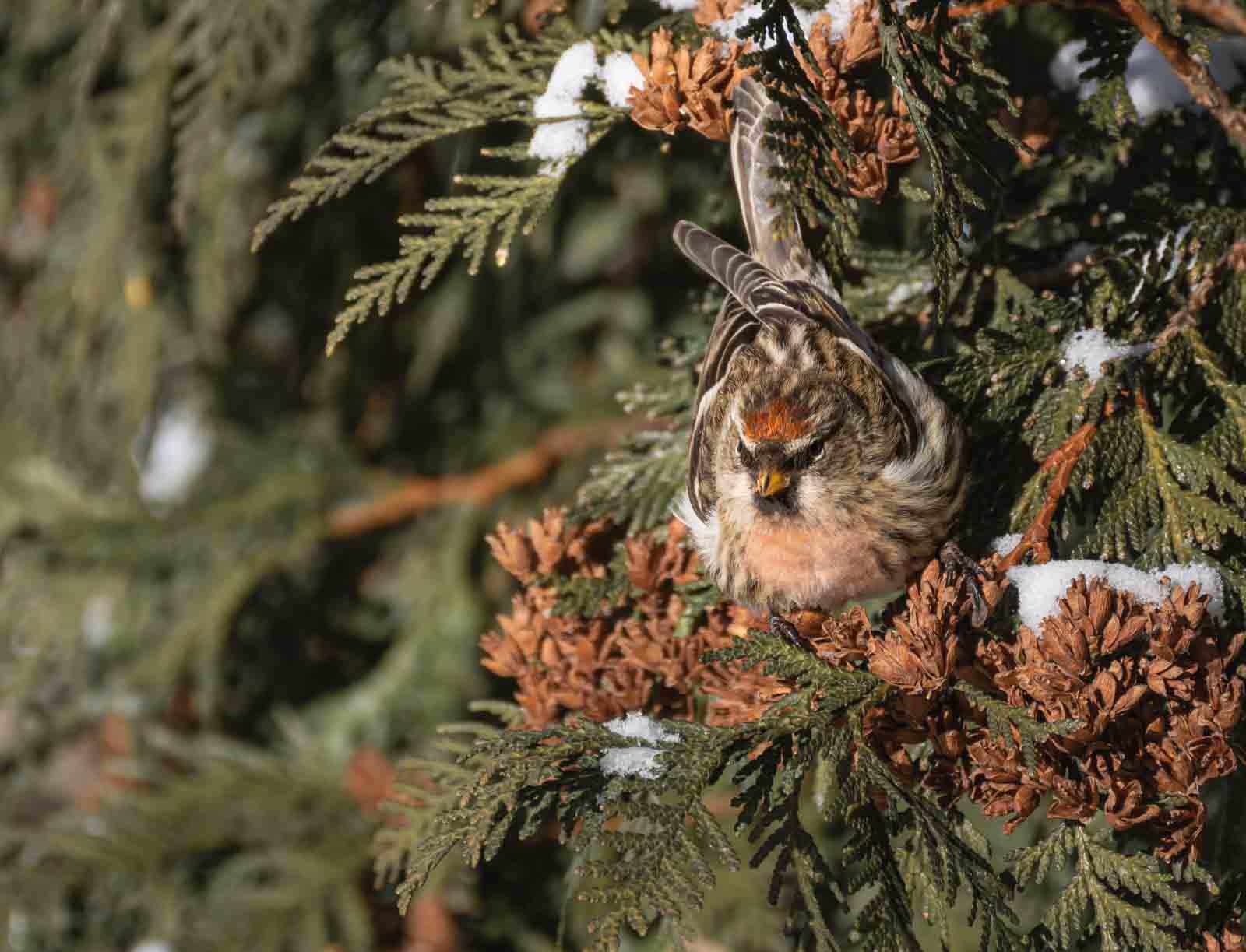
Common redpoll, Acanthis flammea. About: This tiny finch overwinters in flocks throughout the upper Midwest and Canada in frigid temperatures of up to - 65 F. They are known to bury themselves under the snow to stay warm on winter nights. Their range covers all of northern North America, Europe, and Asia, and even though they are hard to find in winter, scientists estimate their population to be in the tens of millions. Behind the shot: I noticed redpolls foraging outside of Youngchild Hall in February. After noticing them there a few times while walking past, I returned with my camera and got some shots. At around 16 degrees, it was challenging to keep my hands warm enough to keep shooting, but I managed to get this photo before having to return to the warm indoors.
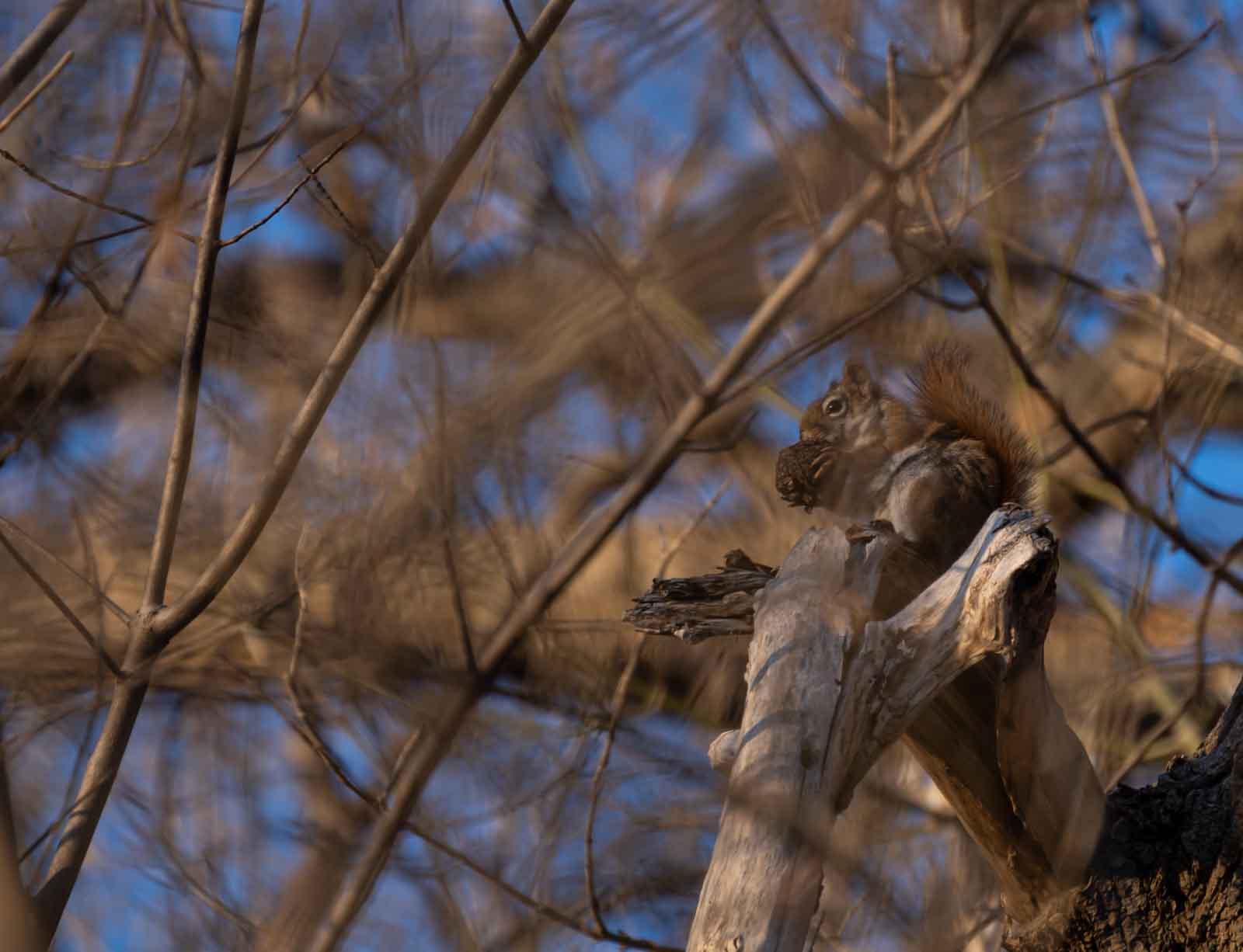
American red squirrel, Tamiasciurus hudsonicus. About: These squirrels are smaller than gray squirrels and can be distinguished from Eastern fox squirrels by a substantially lighter tan belly. They are very territorial and asocial, so you will rarely see more than one in a single location. They are primarily found in the wooded areas on campus and their color allows them to blend well into their surroundings. The easiest way to spot one is to catch it running from one spot to another. Behind the shot: Capturing a photo of a red squirrel was harder than I expected. Even though I found two spots where I could regularly see them, they would quickly flee up high into the trees as soon as I approached. I spent quite some time waiting for this one to appear along the trail near Warch Campus Center, and when it did I had to shoot through a thick curtain of branches. I had to switch to manual focus, which I rarely use due to animals moving before I have time to focus on them. This one stayed long enough for me to lock focus and snap a few shots before it disappeared higher up the tree.
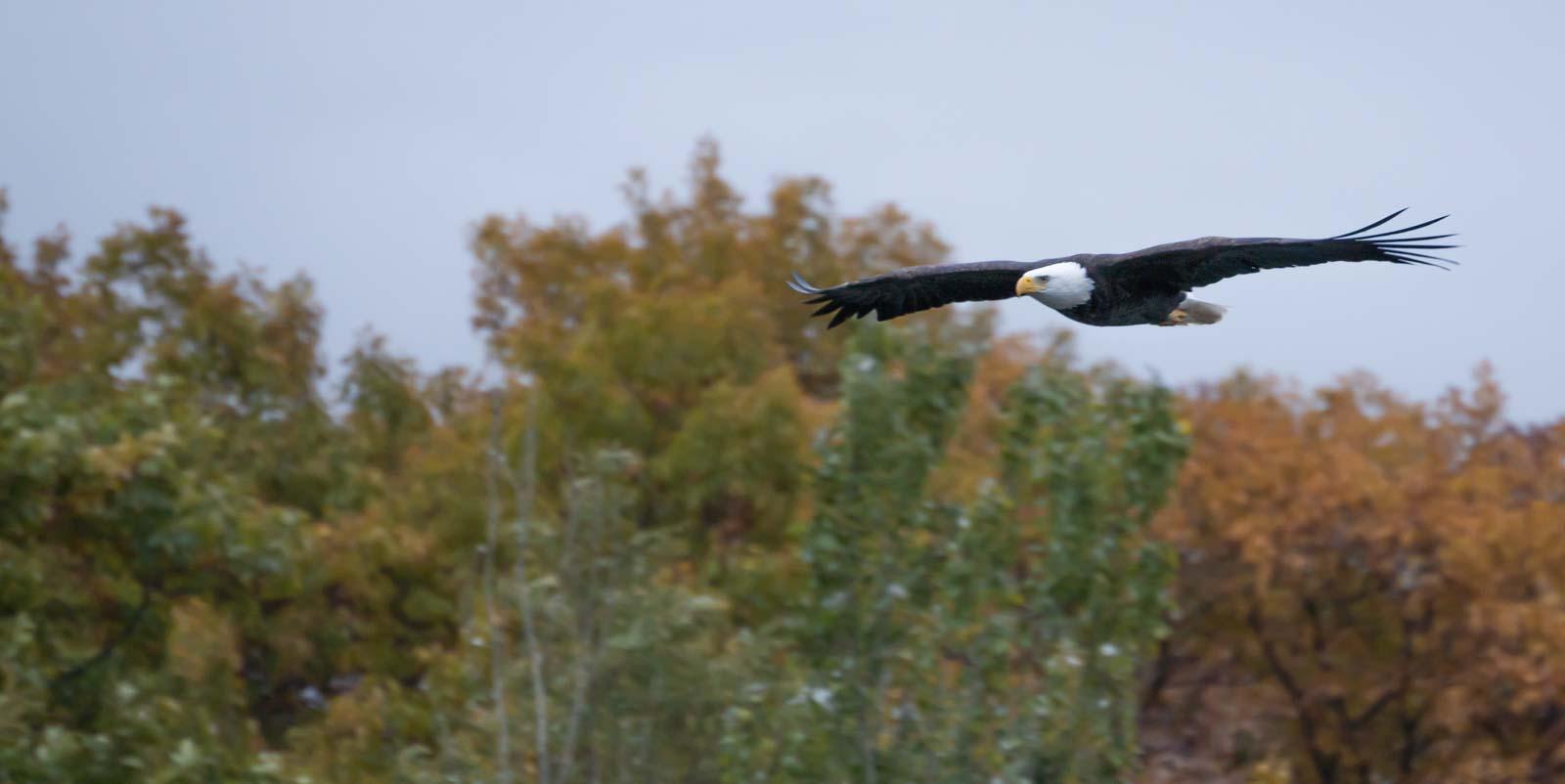
Bald eagle, Haliaeetus leucocephalus. About: Bald eagles are quite common along the Fox River, particularly in winter when they concentrate in places with open water; however, they also nest not far from campus. Bald eagles take four years to mature, at which point they receive their white head and tail. Before that, they are completely brown, which makes them often mistaken for golden eagles. Once mature, bald eagles mate for life and can live up to 38 years in the wild. Behind the shot: In the fall, I was enjoying watching eagles fly low over the Fox River in search of ducks to hunt. While I was on the Lawe Street Trestle Trail, I saw this eagle flying up river toward me. I was able to get a nice flight shot.
Editor's note: Kai Frueh has written about birds and birding for Oregon Birds magazine, the Cornell Lab of Ornithology, and Black Swamp Bird Observatory. His photos appear in Oregon Birds magazine, Cornell Lab’s Merlin Bird ID App, and Birds of the Pacific Northwest: A Photographic Guide.
